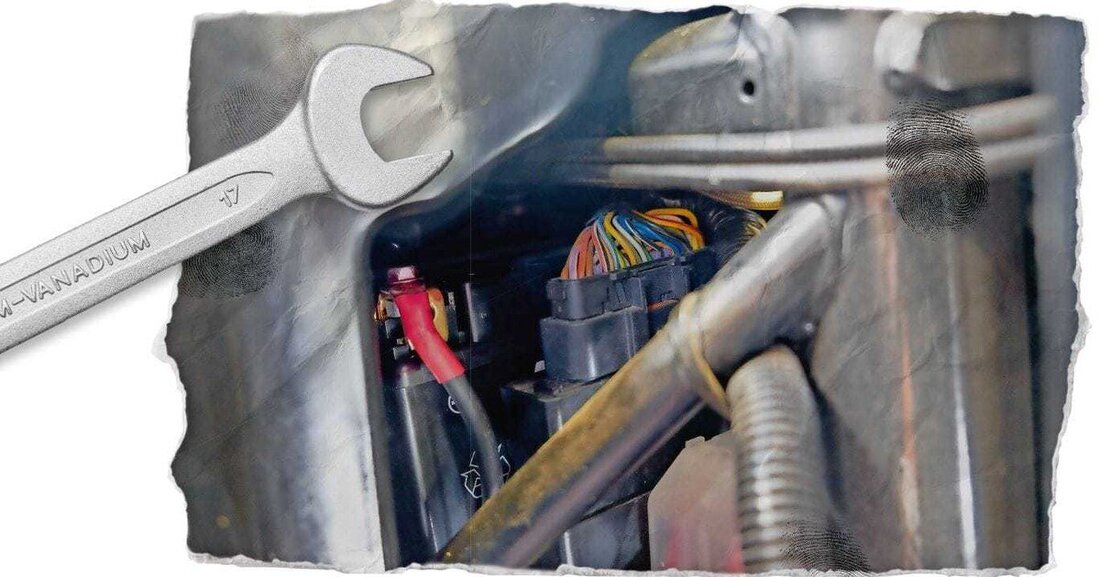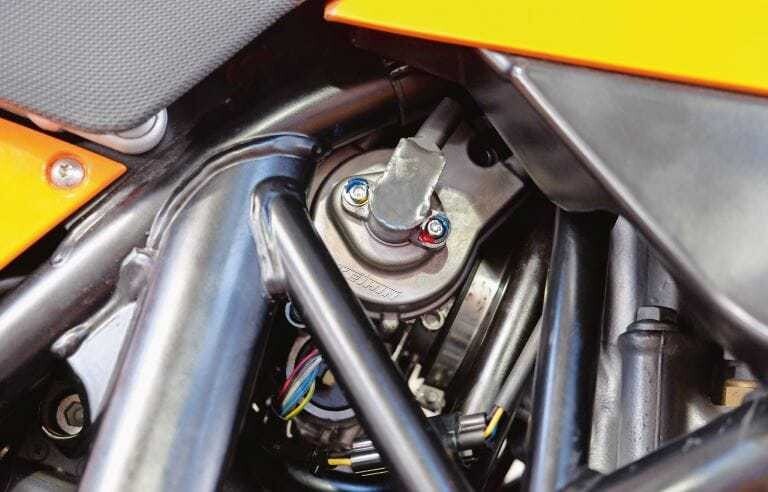KTM 690 SM: Sensor defect
Not only cars, but also motorcycles are increasingly being upgraded with electronic components and corresponding control devices. A celebration for the error devil who struck this time on a KTM 690 SM.

KTM 690 SM: Sensor defect


The eight-year-old supermoto only had 2,800 kilometers on the clock when its owner from Melk in Lower Austria noticed an increased idle speed after starting it. He therefore takes the motorcycle to the nearest workshop to get to the bottom of the matter. The traditional car dealership Eckl in Bergland near Ybbs specializes in trading and repairing the KTM, Triumph and Vespa brands in the two-wheel sector. Workshop manager Christian Eder takes delivery of the KTM Supermoto and during the initial diagnosis actually notices an increased resting heart rate in the single-cylinder four-stroke engine. A diagnostic crime thriller begins.
▶ The bike is connected to the brand's own diagnostic device X1 via the typical KTM diagnostic connector. A defect in the throttle grip sensor is displayed in the error memory.
▶ A closer examination shows that the supply voltage, which should be within the tolerance range between 0.5 and 0.7 volts when idling, is increased to 0.85 volts.
▶ The workshop employee takes the screwdriver and adjusts the voltage on the adjustable potentiometer back to the normal range.
▶ The next day the motorcycle is started on a trial basis. To the automotive technician's astonishment, the voltage has again been adjusted to the increased value as if by an invisible hand.
▶ A defect in the twist grip sensor seems obvious, so it needs to be replaced. A start attempt shortly afterwards shows that the idle speed is now back in the normal range.
▶ The next day, however: As if by magic, the voltage has again adjusted to an increased value and the idle speed is already too high again.
▶ Now the housing in which the sensor sits on a shaft that leads to the throttle valve is also replaced. The automotive technician's suspicion that minimal play in the shaft in the hole in the aluminum housing could have caused the defect seems to be confirmed: After the replacement, the idle speed remains permanently in the normal range and the case is solved.
▶ Concluding comment from Christian Eder: “To this day we can’t actually explain what the exact cause of the defect was, but by replacing the sensor and the housing the error has now been fixed.”
“To this day we can’t actually explain what the exact cause of the defect was, but by replacing the sensor and the housing the error has now been fixed.”CHRISTIAN EDER
PETER SEIPEL COMPUTER ON BOARD
ModernityMotorcyclesare equipped with more and more electronic aids that, among other things, prevent the wheels from locking when braking, control the front light and the displays on the display or ensure the best traction in different road conditions. Sensors on the chassis continuously detect the angle of inclination of the two-wheeler,Sensorson the wheels detect the slip or a possible blockage. Like any computer, they are installed in the motorcycleControl devicesregularUpdates, with which functions such as the response of the ABS or the charging efficiency of the alternator are improved. The viaDiagnostic deviceHowever, updates installed should only be carried out by experienced automotive technicians. Because if the system “hangs up”, nothing works anymore, just like with a home computer. Then all you need to do is call the KTM headquarters, which can “reset” the motorcycle via remote maintenance.

 Suche
Suche
 Mein Konto
Mein Konto